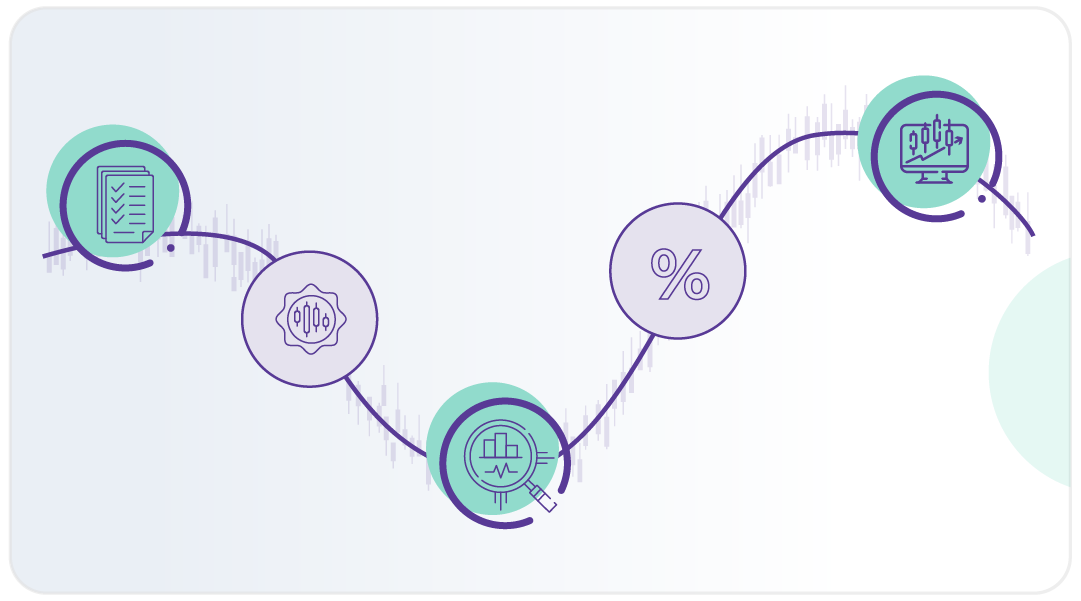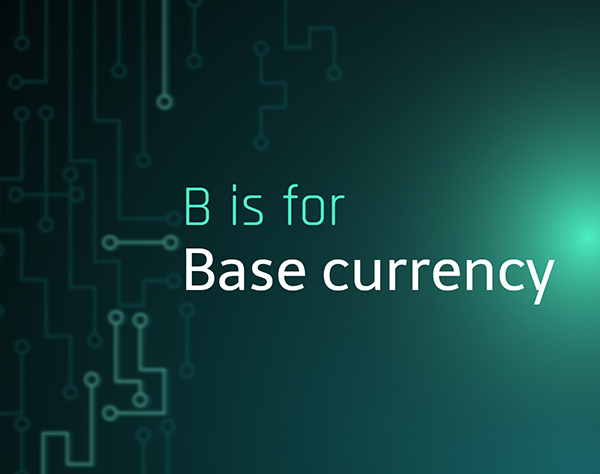Volatility is a measure of how much the price of an instrument moves. It is usually expressed as an annualised %. It is often calculated as the standard deviation of the daily moves in price of an asset from its average. Volatility is used to describe both, what has happened in the past, the historical volatility, and what is expected or predicted to happen in the future.
As no one can see into the future to know what the volatility will be, traders often look at historical volatility data, and use this to predict what the future will look like. They take in many other factors too, like upcoming elections or events with outcomes that are hard to predict.
If an asset is highly volatile, its price is expected to change suddenly and dramatically. By contrast, assets with low volatility are expected to move in a consistent and predictable manner.
Since the market perceives an asset with low volatility as more predictable in its moves, they’re traded more frequently, and this also makes them more liquid and easily available.
Why currencies fluctuate
Currencies fluctuate in value for many complex, interconnected reasons. When conditions are, on balance, negative, a currency’s exchange rate will usually weaken. In other words, it’s value will be lower relative to other currencies. By contrast, when these factors are, on balance, positive, a currency increases in value.
No-one can claim to have the complete list of factors. When people’s expectations or predictions of the future change due to new information or a new outcome, it is common to see price movement to reflect this. Some of the factors that can cause a currency’s exchange rate to fluctuate include:
- The strength of the country’s economy. A stronger, more resilient economy attracts more investment, which has a positive influence on the currency’s value
- Interest rates. Low interest rates make borrowing cheaper, which encourages the market to take on credit. Increased credit means there’s more money readily available thereby reducing the value of the currency, which can lead to inflation.
- Inflation, that is the rate at which a currency’s purchasing power is decreasing. High inflation means basic necessities cost more money, which makes the currency less valuable
- The balance of trade. Imports are usually paid for in the currency of the country those goods are coming from. So, if country X’s exports to country Y are worth more than its imports, for instance, demand for country X’s currency will increase
- Countries are less attractive places to invest in and trade with when the political climate is uncertain. Governments may also have policies that make it harder to do business
Generally, but certainly not always, major currency pairs like GBP/USD and EUR/USD tend to have low volatility. This is because their countries have stable governments, more developed financial systems, and strong, developed economies.
These currency pairs are also exchanged in large volumes on a daily basis, so it’s very transparent what the price is at any given time.
On the other hand, developing countries’ currencies tend to be more volatile and less liquid, because the political climate can be unpredictable, and their economies are more vulnerable to external and internal shocks like increases in the price of oil.

Some Facts
- While developing countries’ currencies tend to be more volatile, developed countries’ currencies aren’t immune from big fluctuations. After the Brexit referendum result was announced, for instance, the British Pound promptly lost 10% of its value against the Euro.
- Similarly, EUR/CHF is widely regarded as one of the most stable currency pairs. But the Swiss Franc’s value against the Euro shot up 30% overnight when the Swiss government decided to unlink its exchange rate from the Euro’s in 2015.
- AUD/JPY is one of the most volatile currency pairs, because it’s very sensitive to changes in market sentiment. Traders tend to buy Australian Dollars when market conditions make them feel good about taking risks, while the Yen is a safe haven — a currency traders tend to hold onto when the economy is in trouble.
Want to know more?
- Even seemingly insignificant factors that can influence exchange rates. This article explores the stories behind 9 of the biggest exchange rate movements in the history of forex markets.
- Volatility traders care about what is expected to happen as well as what has actually happened in the market. Implied volatility is the market’s expected movement over a defined period while realized volatility is the actual movement that happened in that time. Read this article to learn more.
ALT21’s perspective:
‘Volatility and risk are interrelated, but they’re two different things. While you can measure volatility, it’s not something you can control. By contrast, you can decide how much risk you want to take and manage it by using hedging instruments.
Needless to say, volatile currencies carry more risk, because fluctuations are more drastic. You can make big profits. But if the market doesn’t go your way, you can make huge losses.’


